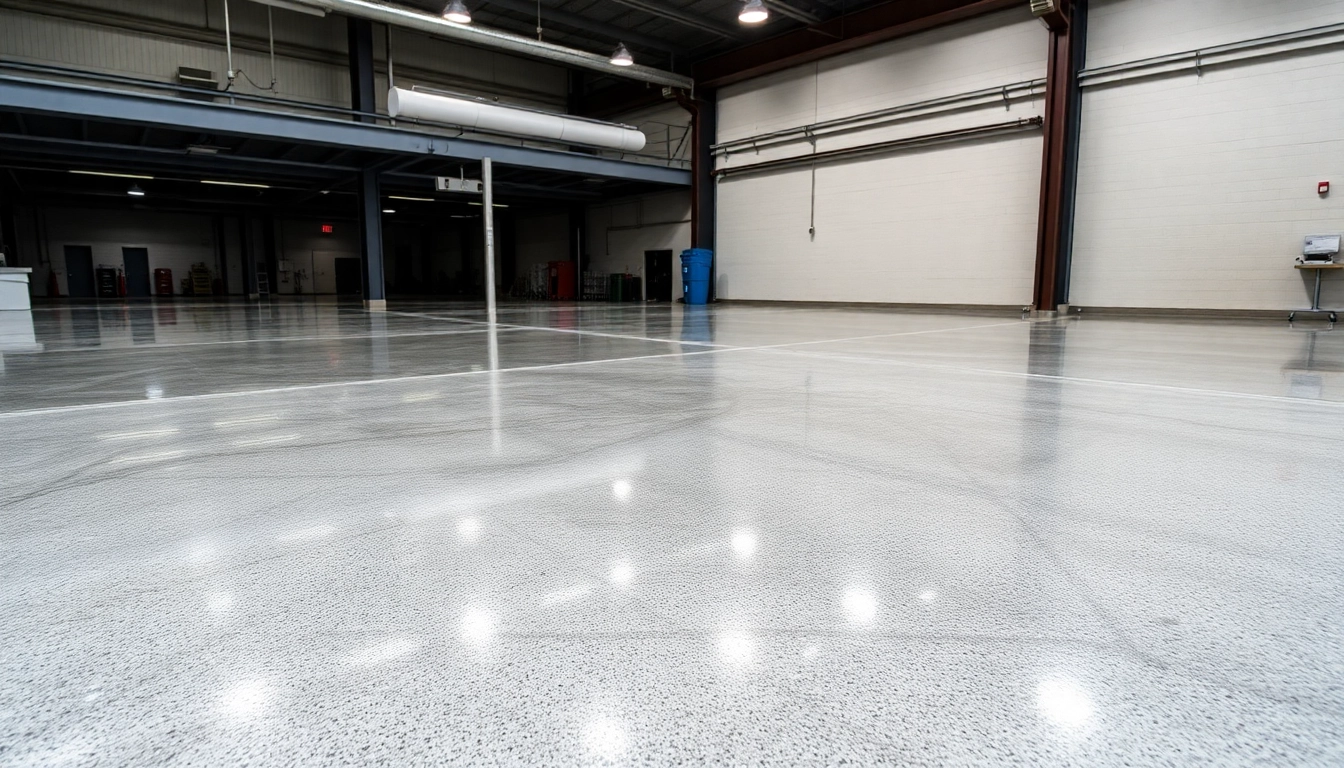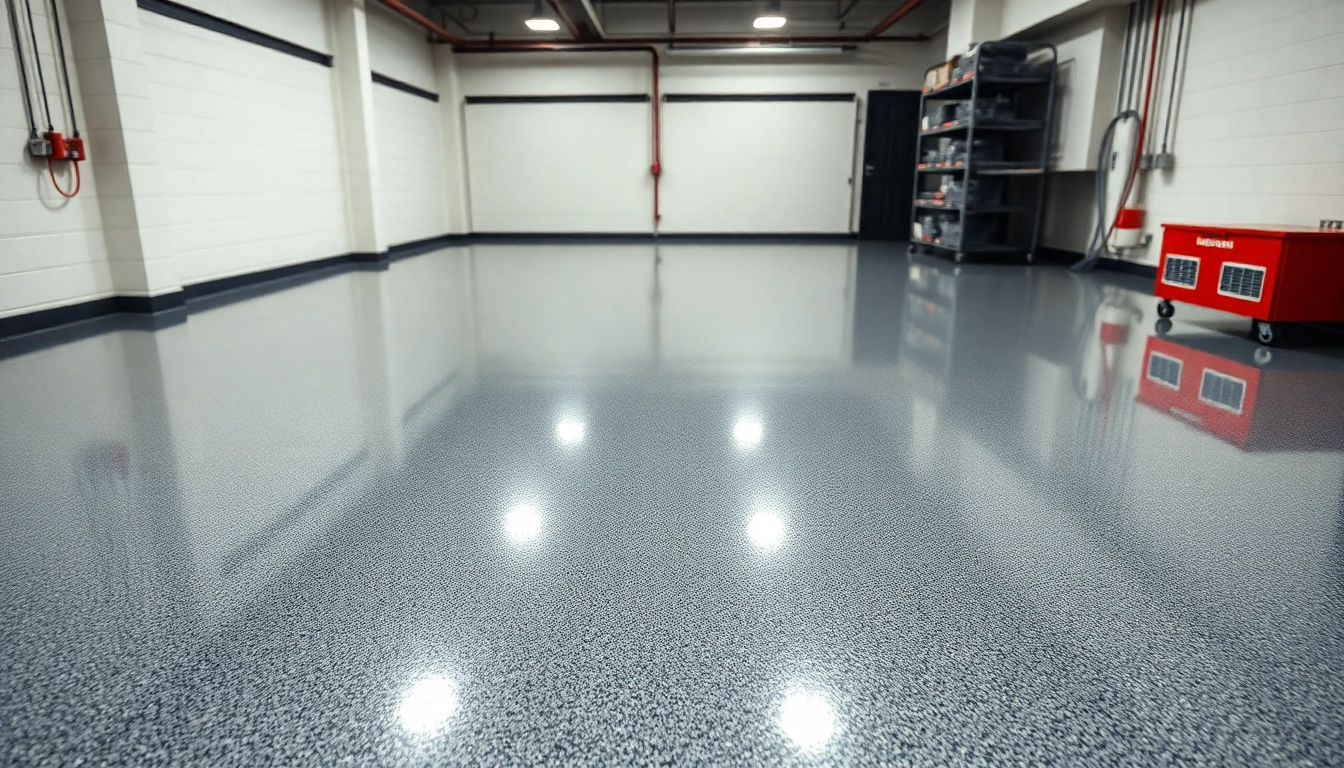Introduction to Epoxy Resin Floors
Epoxy resin flooring has become an increasingly popular choice for both residential and commercial spaces due to its exceptional durability, aesthetic versatility, and ease of maintenance. Whether upgrading a garage, transforming a retail shop, or creating an industrial-grade surface, epoxy floors offer a robust solution that combines function and style. As the demand for high-performance flooring grows, understanding the intricacies of epoxy resin floors—from their composition and benefits to installation and maintenance—is essential for making an informed decision. If you’re considering this innovative flooring option, exploring detailed insights and practical tips can help you achieve a stunning, long-lasting result.
For a comprehensive overview and to explore top-tier epoxy products, visit Epoxy resin floor for expert guidance and high-quality materials.
Understanding Epoxy Resin Flooring
Epoxy resin flooring is a composite material formed by mixing epoxy resin with a hardener, creating a strong, chemically resistant surface. These floors are often infused with additional elements like pigments, aggregates, or flakes to enhance aesthetics or functionality. The epoxy forms a seamless, rigid coating that tightly bonds to concrete surfaces, making it ideal for spaces that demand toughness, resistance, and visual appeal.
Commercial facilities, warehouses, garages, and even residential basements frequently utilize epoxy floors because of their impressive capacity to withstand mechanical wear, chemical spills, and heavy foot traffic. With advancements in chemical formulations, modern epoxy systems now cater to different performance needs, from ultra-clear finishes for showrooms to high-chemical-resistance coatings for laboratories.
Key Benefits of Epoxy Floors
Durability
Epoxy floors are renowned for their high resistance to abrasion, impact, and chemical exposure. This makes them suitable for high-traffic environments and industrial settings, where floors are subjected to constant stress. The durability extends the lifespan of the flooring, reducing the need for frequent repairs or replacements.
Ease of Maintenance
The seamless surface of epoxy floors prevents dirt, debris, and liquids from penetrating, simplifying cleaning tasks. Regular sweeping and mopping with mild detergents are often sufficient to maintain their appearance and hygiene, making them a cost-effective flooring choice over time.
Versatility in Design
Epoxy systems are highly customizable, offering a vast array of colors, patterns, and finishes. From metallic effects to decorative flakes, epoxy flooring can be tailored to match your aesthetic preferences, whether you desire a sleek modern look or a textured, decorative surface.
Resistance to Chemicals and Slips
Many epoxy formulations provide strong resistance against oil, solvents, acids, and other chemicals, essential for factories and garages. Additionally, additives like anti-slip aggregates can be incorporated to enhance safety in wet or oily environments.
Common Uses and Applications
Epoxy resin floors are versatile and suited for numerous applications, including:
- Industrial Warehouses: Heavy machinery and forklift activity require durable flooring; epoxy withstands impacts and abrasions.
- Commercial Kitchens and Food Processing: Chemical resistance and easy sanitation support hygiene standards.
- Garages and Workshops: Scratch resistance and customization options make epoxy perfect for personal and professional garages.
- Basements and Home Gyms: Transform dull concrete into attractive, resilient floors.
- Retail and Showrooms: Aesthetic finishes highlight products or convey brand identity.
These applications demonstrate how epoxy flooring can be adapted to meet diverse functional and aesthetic demands, making it an investment that adds value and safety to any space.
Design and Style Options for Epoxy Resin Floors
Color Variations and Effects
Epoxy floors come in virtually infinite color options. Solid colors can create crisp, clean appearances, while translucent or tinted epoxies offer depth and visual interest. Metallic epoxy finishes leverage special pigments to produce highly reflective, swirling effects that mimic natural materials like marble or water. These finishes add a luxurious look, suitable for high-end commercial spaces or trendy residential interiors.
Patterns, Flakes, and Custom Finishes
Decorative elements such as color flakes, quartz aggregates, or stenciled patterns allow for personalization. Flake epoxy floors are particularly popular in garages and basements, where they add texture and hide imperfections. Custom logos or graphics can also be embedded within the epoxy layer, providing branding opportunities or artistic expression.
Choosing the Right Style for Your Space
Factors influencing style selection include the environment’s foot traffic, chemical exposure, safety needs, and aesthetic goals. For functional industrial settings, neutral tones with anti-slip additives may be preferred, while stylish metallic or decorative finishes suit retail spaces or stylish home interiors. Consulting with a flooring expert can help match your design ambitions with the appropriate epoxy system for optimal results.
Installation Process and Best Practices
Preparing the Surface for Epoxy Application
Proper surface preparation is critical for ensuring adhesion and longevity. Steps include:
- Removing existing coatings, grease, dust, or debris.
- Repairing cracks or surface imperfections with suitable patching compounds.
- Cleaning the concrete thoroughly, often using shot blasting or acid etching to create a profile conducive to bonding.
- Ensuring the surface is dry, flat, and free of moisture to prevent future peeling or bubbling.
Step-by-Step Installation Tips
While professional installation is recommended for the best results, DIY enthusiasts can follow these key steps:
- Priming: Applying a primer tailored to concrete ensures improved adhesion.
- Mixing: Carefully follow manufacturer instructions to mix epoxy components accurately, avoiding air entrapment.
- Application: Use suitable tools (rollers, squeegees) for even spread, and work in manageable sections.
- Adding Decorative Elements: Incorporate flakes or effects during the curing phase for seamless aesthetics.
- Curing: Allow adequate time (generally 24-72 hours) without foot traffic or disturbance to achieve optimal hardness.
DIY vs. Professional Installation
While DIY epoxy kits are accessible and affordable, achieving a flawless finish requires skill, proper preparation, and environmental control. Professional installers bring expertise, advanced equipment, and access to premium materials, resulting in superior durability and appearance. For large or high-stakes projects, hiring experts ensures the lifespan and performance of your epoxy floor meet expectations.
Maintenance and Longevity of Epoxy Floors
Cleaning and Care Tips
Maintaining epoxy floors involves regular sweeping to remove debris and mopping with mild detergents to prevent staining. Avoid abrasive cleaners or tools that could scratch the surface. For spills, especially chemicals or oils, clean promptly to minimize potential damage or staining.
Repairing Common Damages
Minor chips or scratches can be repaired with epoxy touch-up kits. For larger issues, sanding the damaged area and re-coating with matching epoxy ensures seamless repairs. Preventing damage through protective pads and safety practices extends your floor’s lifespan.
Maximizing Floor Durability Over Time
Protective measures like adding slip-resistant aggregate, periodic resealing, or applying topcoats can enhance longevity. Also, controlling environmental factors—such as avoiding excessive moisture or chemical exposure—preserves the epoxy’s integrity.
Cost Considerations and Choosing the Right Product
Budget Planning for Epoxy Projects
Costs vary depending on the size of the area, epoxy type, and complexity of the design. Basic DIY kits can start as low as $60, while commercial-grade systems may cost several hundred pounds per gallon. Planning expenses for surface preparation, materials, and labor helps ensure your project stays within budget.
Comparing Popular Epoxy Kits and Systems
Top-rated kits like Rockhard USA’s epoxy system offer high durability and specific formulations tailored for commercial use. Consumer-friendly options, like EPODEX or Stone Coat, provide user-friendly layers suitable for home projects. Analyzing features, reviews, and price points aids in selecting the best fit for your needs.
Factors Influencing Overall Costs and Value
Durability, aesthetic quality, and application complexity balance with initial costs. Investing in higher-quality epoxy often reduces long-term maintenance and repair expenses, delivering better value over time.



